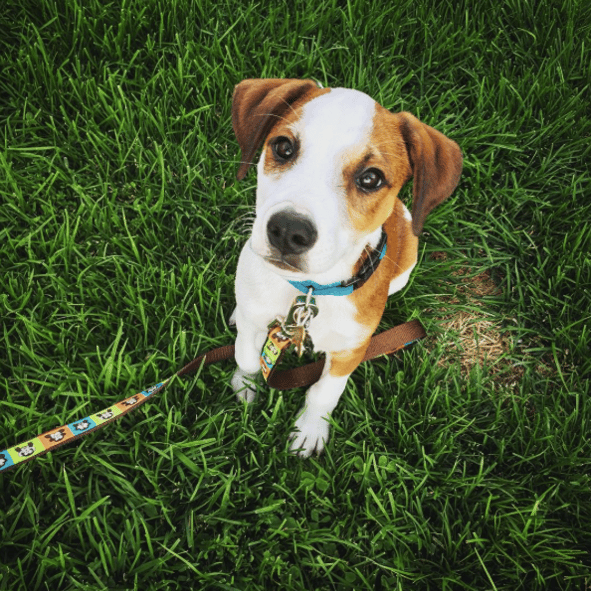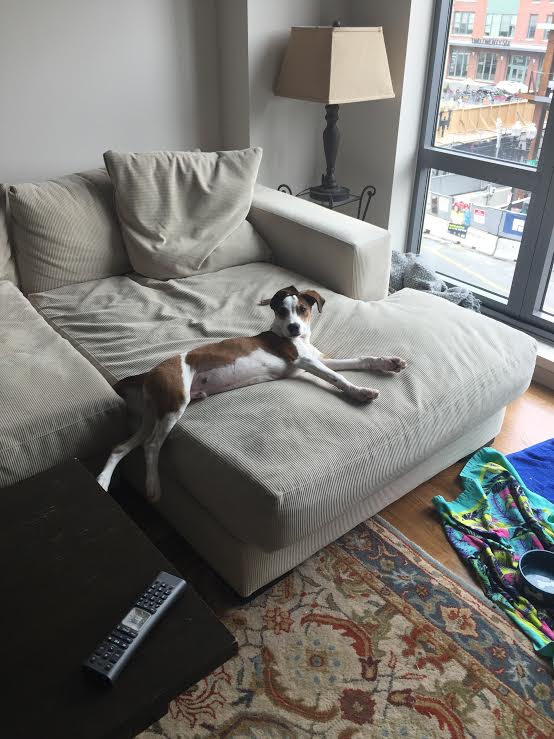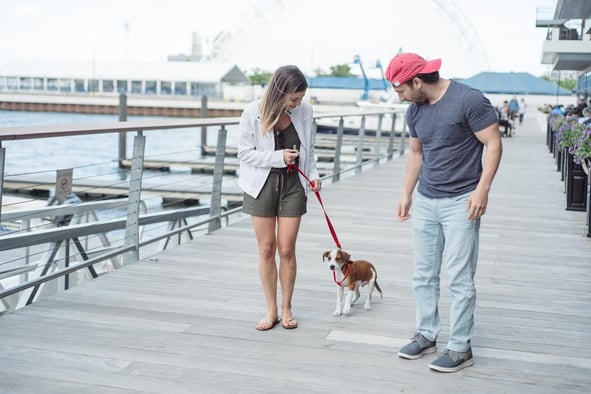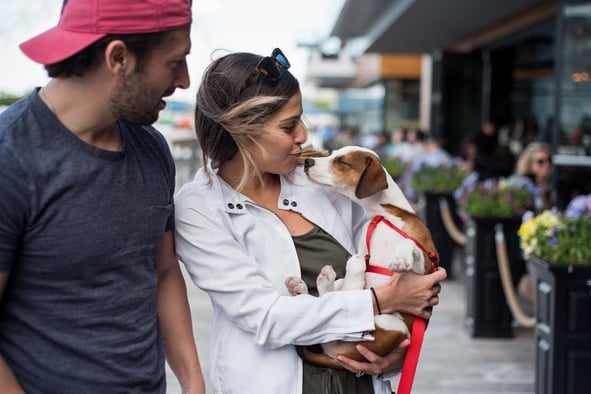On a recent trip home to Boston, I was welcomed with a big surprise: My future sister-in-law and her husband (whom I was staying with) had just adopted a new puppy from Buddy Dog Adoption Center. It goes without saying that I was nothing but ecstatic.
As a vet, I meet new puppy owners all the time. I give dog training advice on a regular basis. Having not actually lived with a puppy in over fifteen years (my family dog just turned sixteen, happy birthday Jesse, you gray, little senile thing you) I had forgotten just how much effort, time, and commitment goes into training a new puppy.
Here are 5 Essential Puppy Training Tips I gained from my time with Neptune.

Neptune at 10 weeks.
1. Crate Training Is A Must
Dogs are cave-dwelling and den-animals by nature. This can be used to your advantage in training your pup! The crate is an enclosed space where your dog feels safe (and you can feel safe he's not getting into trouble!) According to the Humane Society of the United States, there are three major benefits of crate training:
- House training: Dogs do not want to soil where they sleep.
- Safety: For your dog and your furniture! Keeping them crated when unsupervised prevents them from getting into trouble.
- Transportation: Crating your dog while in the car is the safest way to travel.
Initially, crate training isn't easy. Listening to Neptune whine (and by whine, I mean a wail like a mate-seeking sluphur crested cockatoo) was extremely hard. It required patience and resilience. We fed him all his meals in his crate, so he began to associate it with positive feelings. We started slow, leaving him in it for short periods of time with lots of toys.
In the end, all it took was a few nights of my brother-in-law (Jonny) sleeping on the couch next to his crate, and some solid ear plugs for me and Abby. By the end of the week, Neptune was willingly climbing into his crate at bedtime.

2. Establish the "House Rules" Early
As in, before you bring the new dog home. With Neptune, we ran into this problem right away. Jonny wanted Neptune to be allowed on the couch while Abby was vehemently against the idea. Problem was, Neptune was already in the picture and receiving mixed messages.
Things to consider:- Where will the crate be kept?
- Are parts of the house off-limits?
- What are his commands going to be?
- Is he allowed on the bed?
Have these conversations early on, so all members of the house are on the same page. Whether or not you decided to allow your dog on the couch doesn't matter. Just set the boundaries from the start - and stay consistent.
So what was the verdict with Neptune and the couch? I recently received this photo from Jonny and it speaks for itself...

3. Understand Canine Body Language
Understanding your dog's body language will help you communicate effectively with him and make training easier.
- Play Bow: If your dog pounces towards you so that his front legs are on the floor with his hind end still in the air, it's an invitation to play.
- Growling: Making the "grr" sound can certainly be a sign of aggression or the response when a dog feels threatened. However, when a puppy is playing (particularly when tugging) and he makes this deep sound, it can also mean he's having fun.
- Yawning: Can indicate boredom or sleepiness, but can also be a sign of stress and anxiety.
- Mounting: This isn't always a sexual behavior. It occurs in both male and female dogs, and it is often a declaration that one is the winner of the game at the time. It is a part of normal puppy play, but can be gently discouraged to minimize embarrassing situations!
4. Discourage Nipping and Biting
This was, and still is, Neptune's main puppy problem. The solution? Respond like a dog. Whimpering and crying in a high-pitched voice when he nips your hand, signals to him that this hurts. You might feel like a crazy person but hey it works.
Additionally, try to replace your hand (or whatever he may be biting) with a chew toy. If there isn't one nearby, then stop moving, start crying and resist the instinct to pull away and wave your hands, as this might indicate to him you want to play. Praise him when he stops biting or starts licking you.

5. Seek Help From the Pros
While vets and experienced dog owners are helpful in guiding new puppy owners, professional puppy and dog trainers are the most helpful when it comes to training you and your pup. Whether it's puppy training school (which is also great for socialization) or one-on-one help for personalized training tips, I highly recommend talking to a professional.
Based in Boston, little Neptune went to a puppy training camp with Bradley's Canine Education. There, he and his parents, learned crucial tips that have set him up for obedience success!
For puppy training in Sydney, PPVH works closely with Take A Lead. Puppy training classes are held at the clinic every Sunday.

Neptune with his proud puppy parents.
Having a new puppy is extremely exciting, but know that it's also typically exhausting!
Understanding the basics of dog behaviour training prior to getting your new pup, will help you raise a confident, obedient and well-adjusted dog.
